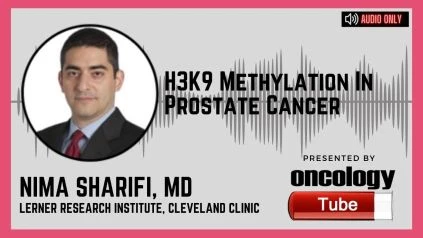Nima Sharifi, MD, director, Center for GU Malignancies Research, Lerner Research Institute, Cleveland Clinic. In this video, he speaks about H3K9 methylation drives resistance to androgen receptor–antagonist therapy in prostate cancer.
Relevance
This study demonstrates that antiandrogen therapy produces viral mimicking reactions, which are essential for anticancer efficacy. In prostate cancer, H3K9 trimethylation to silence endogenous repeat regions is critical for restoring heterochromatin stability and progressing to antiandrogen resistance. The H3K9 trimethylation mechanism has been linked to poor outcomes in men with prostate cancer, according to our findings. Drug-resistant cancers can be resensitized and cytotoxic interferon responses elicited by blocking this epigenetic axis. In the development of innovative epigenetic therapeutics and immunotherapeutic techniques for prostate cancer, antiandrogen timing and modulation of the H3K9 methylation–endogenous repeat elements–interferon axis should be explored.
Overview
Antiandrogen techniques remain the backbone of prostate cancer treatment, but drug resistance develops. We show that androgen deprivation causes retroelement (RE) deregulation, which is followed by a double-stranded RNA (dsRNA)-stimulated interferon response that inhibits tumor growth. H3K9 trimethylation (H3K9me3) was found as an important epigenetic response to antiandrogens, allowing transcriptional suppression of REs that would otherwise increase interferon signaling and glucocorticoid receptor activation. A higher level of expression of terminal H3K9me3 writers was linked to poor patient hormonal treatment results. Forced expression of H3K9me3 writers conferred resistance, whereas blocking H3K9-trimethylation writers and readers restored RE expression, hence blocking antiandrogen resistance. Our findings point to a drug resistance axis that combines several cellular signaling aspects and identifies possible pharmacologic weaknesses.

